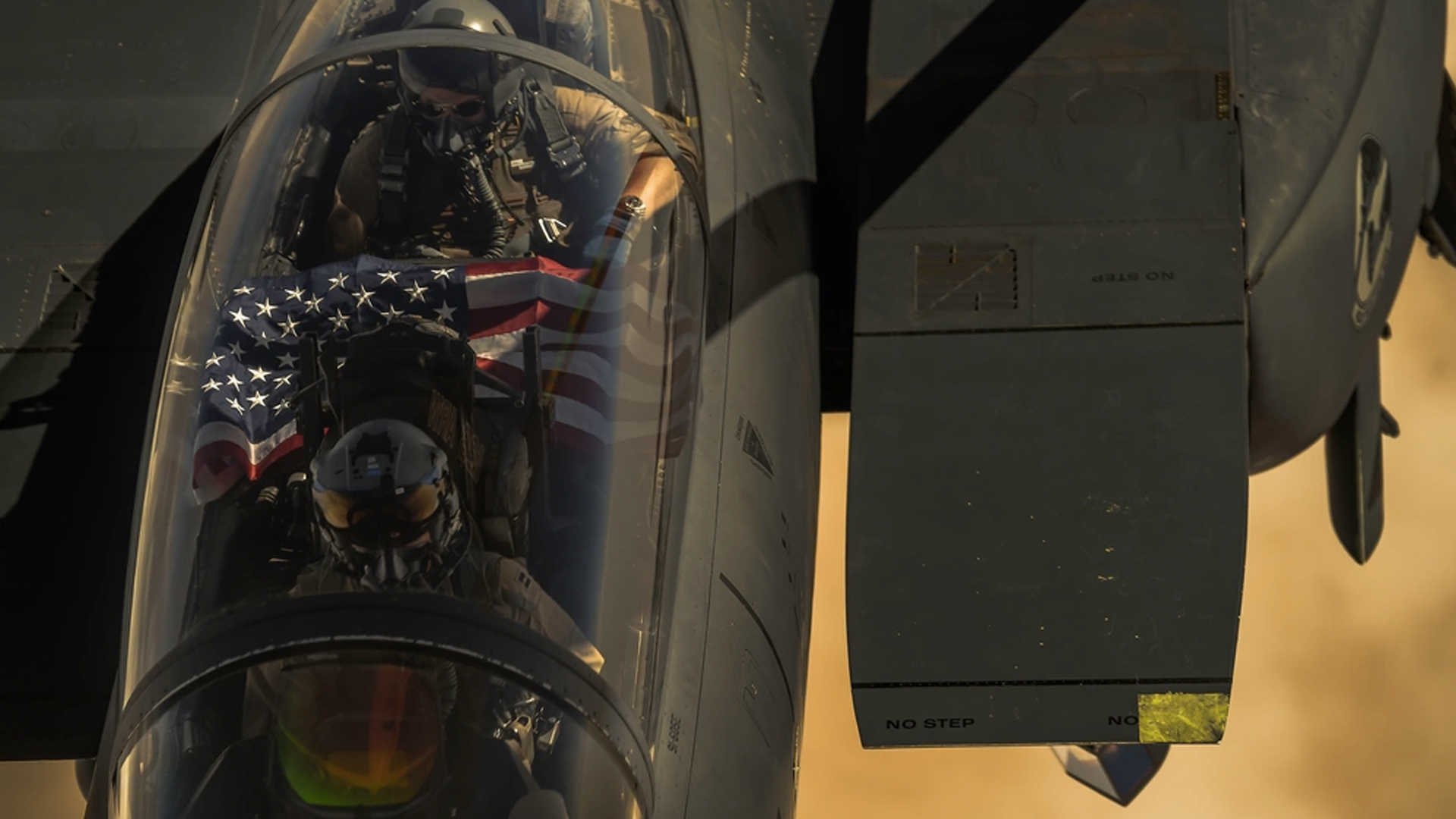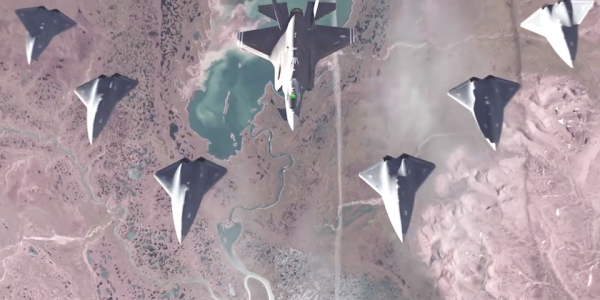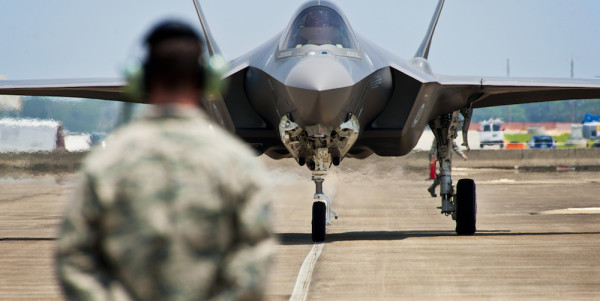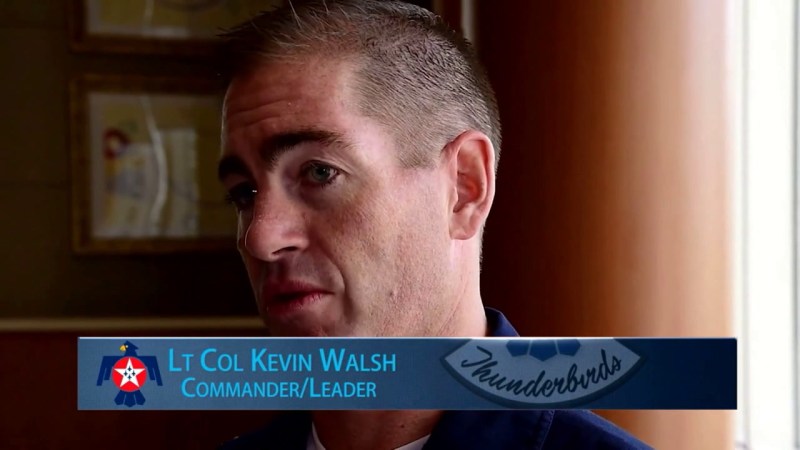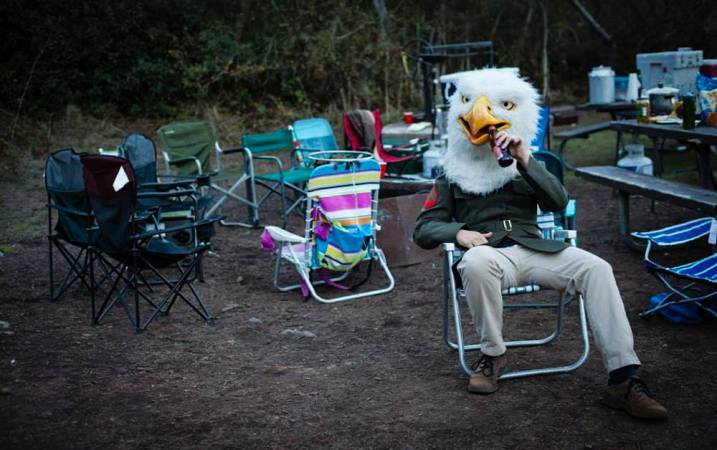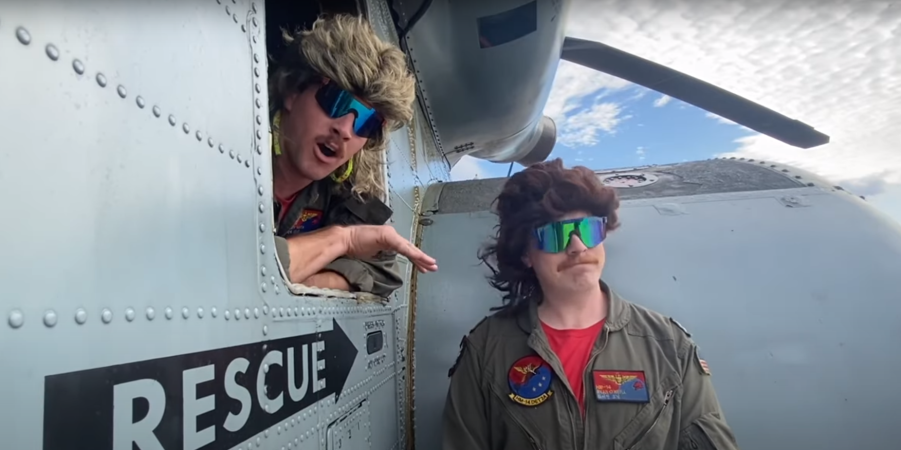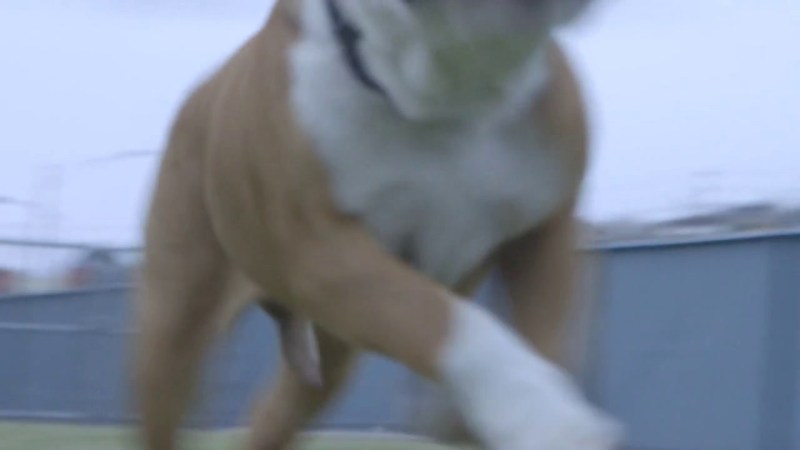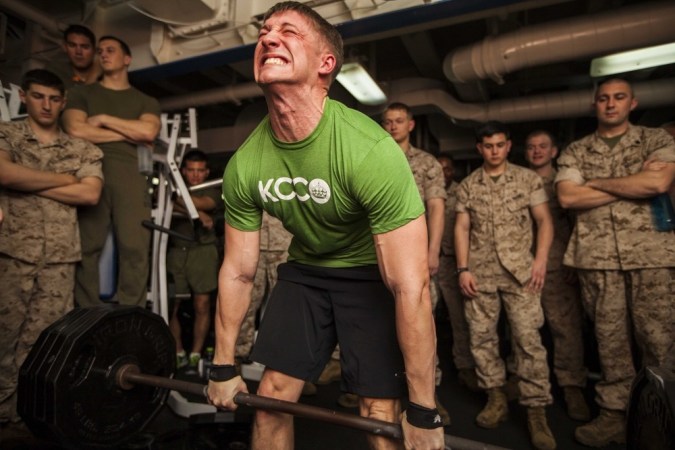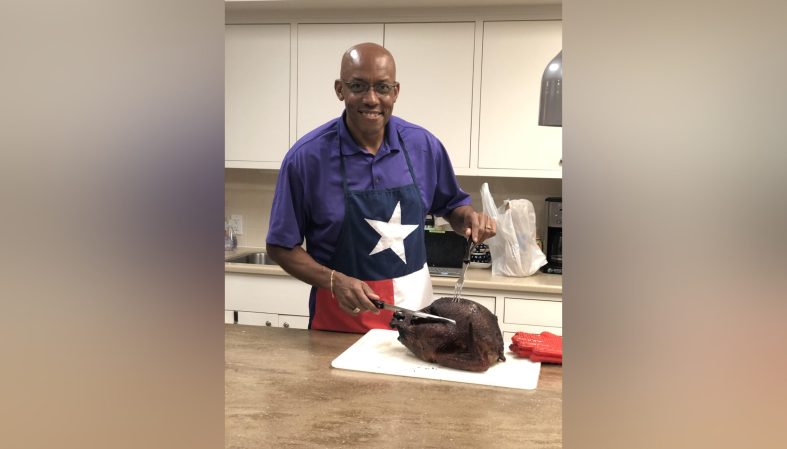Whether it’s doubles tennis, beach volleyball or two-seat bobsled, some sports are awesome when there are two people working together. The same rings true for flying jets like the Air Force’s F-15E Strike Eagle, a two-seat fighter with a pilot sitting in front and a weapon systems officer, a.k.a. ‘wizzo,’ in the back. The ‘wizzos’ are often unsung heroes, but they enjoyed a rare shout-out on Facebook last week, when a lifelong Wizzo broke down their vital role in the air.
“Wizzos are important because two skulls are better than one,” said Lt. Col. Eric ‘Dorf’ Ostendorf in a video posted to the Seymour Johnson Air Force Base Facebook page. Ostendorf has flown in both F-15E Strikes and F-111 Aardvarks across 33 years of service.
“Having two crew members allows you to divide up all those complicated tasks that are required by modern fighter tactics,” he said.

Strike crews certainly have their hands full with complicated tasks. The F-15E, also called the ‘Mudhen,’ was developed in the 1980s as a variation on the standard F-15 Eagle, which is designed and flown almost exclusively for air-to-air combat. The famous saying about the F-15A-D models is “not a pound for air-to-ground.” However, the Strike was designed to take all the strengths of the ‘clean Eagle,’ and add an air-to-ground capability, which would essentially allow it to plow its way into contested enemy airspace, drop a lot of bombs, then fight its way out. But managing a hectic air-to-air and air-to-ground mission is a lot to handle, so the dark-grey painted Strikes have two noggins in the cockpit to get it done rather than just one.
“The great thing about a two-seat aircraft is that we can divide out duties and be more effective,” said a WSO identified as “Capt. Dan” in an interview with Aviation Geek Club. “The pilot in the front seat can coordinate for airspace and refueling, while the WSO in the backseat can talk to the Joint Terminal Attack Controller on the ground, find a target and have a weapon ready to drop.”
Subscribe to Task & Purpose Today. Get the latest in military news, entertainment, and gear in your inbox daily.
Part of what makes the WSO a necessity in the Strike is all the information coming in from the aircraft’s advanced sensors. Many Strikes today carry both Sniper and Litening targeting pods — high-tech machines that use infrared, video and lasers to gather intelligence, detect and identify ground targets and aim a laser-guided, GPS-guided or conventional weapon right onto it. The WSO’s cockpit has four screens monitoring the status of threats, weapons and the aircraft itself, as well as information from radar, electronic warfare, or infrared sensors. When it comes to air-to-ground, the wizzo’s main job is to put warheads on foreheads, especially when there are troops on the ground in need of close air support.

“As a wizzo we figure out what they want to bomb, what is their goal, what is the ground force commander’s intent, and then we will give a weapons recommendation for weaponeering to destroy or neutralize as needed. And then from there we will drop a [designation] and clear the pilot to release the bomb,” said Capt. Lacie “Sonic” Hester in a 2021 Air Force video.
When a Strike is overhead, ground troops often have a wide range of bombs to choose from. Part of what sets Strikes apart from their light-grey, ‘clean Eagle’ counterparts is their conformal fuel tanks: extra fuel reservoirs that bulge out from the aircraft’s two jet engines. The so-called CFTs don’t just add an extra 10,000 pounds of gas: they also bring in an extra six bomb racks each to mount weapons from. Those weapons can include “any air-to-surface weapon in the Air Force inventory (nuclear and conventional),” and plenty of air-to-air missiles too, according to the Air Force website. A big loadout does come with a cost however, as the heavier-loaded Strikes cannot maneuver as well air-to-air as its ‘clean Eagle’ counterparts.
“You really notice that [extra drag] if you put yourself in a [basic fighter maneuver] turning environment,” said Capt. Mark “Smack” Smith in a 2020 interview on the Fighter Pilot Podcast. “That’s where a clean Eagle versus a Strike eagle is significantly different.”

Of course, F-15Es are not the only multirole fighter jets in America’s arsenal. Air Force F-16 Vipers and single-seat Navy F/A-18E Super Hornets also train for both air-to-air and air-to-ground missions, and they only have one aviator to juggle the whole thing. As a result, there is some good-natured dunking on Wizzos.
“So it’s single-seat, highly-effective and can do every mission that you do and fly them all better than you?” said C.W. “Mover” Lemoine, a pilot who flew both Air Force F-16s and Navy F/A-18s, in a video analyzing memes made by F-15E WSOs. One such meme compared the year 2020 to an F-16, which Lemoine disagreed with.
“Nah, 2020’s not that good,” he said.
Still, ask any F-15E crew member and they can rattle off more than one occasion where the combo of a pilot and a WSO working together saved lives not only on the ground but also in the air. Smith and his fellow Strike aviator, Lt. Col Richard “TAC” Turner, had plenty to share in their 2020 interview on the Fighter Pilot Podcast. Turner recalled one night over Afghanistan during Operation Enduring Freedom where he was escorting a convoy and looking out the canopy only to spot rocket-propelled grenades being fired by enemy ground forces at friendly troops. He and his Wizzo ‘Mach’ immediately went to work: communicating the target information, identifying the enemy rocket team and designating the target all in seconds, at which point they could drop a 500-pound GBU-12 bomb on it.
“If I put myself back in an F-35 trying to do the same thing, or an F-16 or anything single-seat really, we do have limitations as humans regardless of how good our systems can be,” Turner said. “I would have had to give up looking at the [RPG team] to fly my airplane or controlling the pod … but through that crew coordination, Mach was able to take all the targeting after that initial acquisition, we were able to trade back and forth and I think we only said like 20 words to each other in about a minute and a half or whenever that whole attack happened.”

Smith had a similar story where he, as the wizzo, could coordinate a strike with the ground forces commander while his pilot, ‘Dingo,’ coordinated an aerial refueling operation. Doing both at once allowed the jet to immediately go support the friendly ground troops and drop weapons faster coming off the tanker than they might have in a single-seat jet.
“It’s something I’m extremely proud of,” Smith said.
Having an extra set of hands to take the controls can also help with aircrew safety too. Both seats in the F-15E cockpit have a fully functioning control stick and throttle. 2nd Lt. Katrina Heikkinen, a spokesperson at Seymour Johnson Air Force Base, told Task & Purpose that wizzos receive flight training, such as how to do navigation, during their undergraduate combat systems officer training, though they do not get flight time on the controls. However, wizzos and other combat systems officers do receive informal flight training, often when they first start the B-Course, Heikkinen said. ‘B-course’ is short for basic course, and each aircraft in the Air Force has one.
Lt. Col. Ostendorf, the WSO interviewed in the Seymour Johnson Facebook video, added that WSOs receive some “stick and throttle” time flying aircraft during their career, but not nearly to the same extent or technical skill level as pilots.
“There is actually a training rule that forbids WSOs from flying during certain critical phases of flight just for this reason,” he told Task & Purpose. “The formal training for WSOs is focused on sensor operation and integration, weapons management, electronic countermeasures, destruction of enemy air defenses, dynamic targeting and weapons utilization to name a few. WSOs do get some stick and throttle instruction but nothing like pilots. For instance, in my training in the T-37 I flew spin recoveries and point to point cruise but never takeoff and landings or fingertip formation.”
That informal flight experience often continues during transient missions, where the crew is just flying from point to point, Turner and Smith explained. It comes in handy though: Turner said he was aware of multiple incidents when the front seat pilot was disoriented or the controls were not responding so the wizzo took control and saved the crew and airplane. Talk about backseat driving!
“One plus one can equal more than two … that’s what really I enjoy about this airplane, going beyond what you can do in that single seat fighter,” Turner said.

Perhaps no story epitomizes the Mudhen’s unique role and the abilities of its crew more than the Hind helicopter bombing of Desert Storm. It was February 14, 1991, a few weeks into the coalition bombing of Iraq and F-15E pilot Capt. Tim Bennett and his wizzo, Capt. Dan Bakke, were over northwestern Iraq hunting for Scud missiles. During the mission, Bennett and his wingmen heard that a Special Forces team in the area had been found by Iraqi troops and needed air support. The two Strikes descended through a layer of clouds towards the team, and when they got within about 50 miles, Capt. Bakke spotted five helicopters on the radar.
“Dan and I started talking about what we were going to do,” Bennett told Air Force Magazine. “We knew there were helicopters down there, but if we were going to shoot them down, we wanted confirmation that they were bad guys.”
As the two jets moved closer to identify the helicopters, they noticed that the choppers seemed to be moving in coordination with Iraqi ground troops trying to herd the Special Forces team into a trap. The image on Bennett’s sensor pods was good enough to identify the helicopters as Mi-24 Hinds, which can carry troops as well as rockets and machine guns. He and Bakke decided to hit the lead Hind with a GBU-10 bomb while the helicopter was on the ground dropping off troops.
“If we hit him, he would be destroyed,” Bennett said. “If he moved off before the bomb landed, it would still get the troops he just left on the ground. It would also give the other helicopters something to think about, which might give the team a chance to get away in the confusion.”

It was going to be tight though: by this point, the Strikes were “screaming over the ground” at almost 700 miles per hour with anti-aircraft fire coming up thick and the Special Forces team still in serious trouble. Bakke painted the lead Hind with a laser and Bennett let the bomb go from about four miles out while the helo was on the ground. At that speed the bomb was going very fast, but the jet’s radar showed the Hind starting to pick up speed and climb.
“I said, ‘There’s no chance the bomb will get him now,’ even though Dan was working hard to keep the laser spot on him,” Bennett said. He was about to let loose with an air-to-air Sidewinder missile when all of a sudden “there was a big flash, and I could see pieces flying in different directions,” the pilot recalled. “It blew the helicopter to hell, damn near vaporized it. We sat there for a few seconds, just staring.”
The two airmen had just scored an air-to-air kill with an air-to-ground bomb, an achievement that’s difficult to pull off in video games, let alone in real life. The crew dropped a few more 500-pound bombs on the same spot to try to kill any other troops dropped off by other helicopters. They were about to start hunting down the other helicopters when another set of friendly aircraft began dropping bombs right over them.
“I figured we had pushed our luck far enough, and we got the hell out of there,” Bennett recalled. Still, they managed to nab a Scud before the night was out.
“The Special Forces team got out OK and went back to Central Air Forces headquarters to say thanks and confirm our kill for us. They saw the helicopter go down,” the pilot said.
As of Turner and Smith’s 2020 interview, the Hind bombing remains the Strike’s only air-to-air kill, and the story has become legend within the Mudhen community. “It’s almost folklore but it’s 100% true,” Turner said.
If stories like that are any proof, you don’t want to be on the other side when a pilot and a wizzo come screaming towards you in a Mudhen.
“Together the Strike Eagle wizzo and pilot are a formidable team,” Ostendorf said. “Acting as a crew, they can employ the Strike Eagle in the air-to-air and air-to-ground role against any threat to America’s national security.”
Correction: This article was updated after publication to clarify that Wizzos do receive formal flight training.
Update: This story has been updated with more comments from Lt. Col. Ostendorf
The latest on Task & Purpose
- ‘Mad Max’-style technicals have become a staple of Ukraine’s fight against Russia
- The difference between Air Force and Navy pilots in one short video
- Watch the ‘Top Gun: Maverick’ film crew get buzzed by an F/A-18 during filming
- Three Navy commanders relieved of duty in the past week
- Hollywood has spent $16 million training Chris Pratt for war
Want to write for Task & Purpose? Click here. Or check out the latest stories on our homepage.

